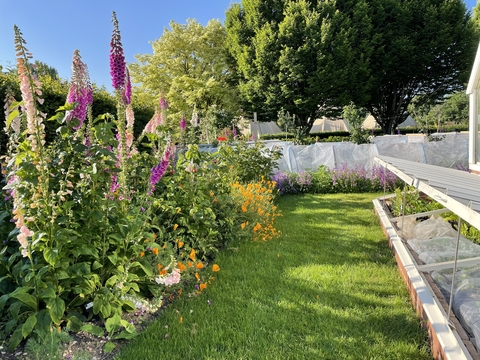Lawns created from grass aren’t right for every garden – and the more fertilised and fussed-over they are, the less beneficial they will be for the environment.
Grass lawns can be greedy. If you want perfect emerald turf, then it will probably need to be manicured, fed, and watered in dry weather. While lawns are much better for the environment than decking or concrete, large swathes of sward can quickly become a monoculture, and these green deserts won’t offer the benefits of more diverse planting schemes.
No Mow May encourages us stow the lawnmower in the shed each year to allow grass to grow and mingle with wildflower and weed seeds. But how about replacing grass altogether for a greener glade of resilient and diverse greens, which need less mowing all year round?
Creeping plants for creepy crawlies
Low-growing, mat-forming plants such as herbs and sedums can create lush, lawn-like turf in smaller areas – while also providing greater biodiversity, with more habitats and food for insects. Some may even provide edibles for you too!
While these plants are not suitable for large expanses of lawn, due to the cost, they’re the perfect fit for a small or urban garden and can grow in areas where grass might be difficult to maintain. Though they’re not as tough as conventional lawn grass, steppingstones can help avoid damage from heavy footfall.
Think about your location first before planting. The idea of right-plant-right-place still applies to lawns, so if you have a south-facing garden chamomile or thyme might be best, while brass buttons and creeping Jenny will tolerate shade.
The best time to plant will be in late spring. Clear the ground of weeds first, and rake until level. Plant in clumps 30cm apart so they will slowly spread and knit together. You can hand weed in between.
New plants will need to be watered well for the first six weeks but eventually they will require less maintenance than a lawn. They won’t need feeding and are low growing by nature. To get that ‘lawn-look’, they will need mowing or clipping with hand shears four to five times a year – but this is much less mowing than your average grass lawn.


